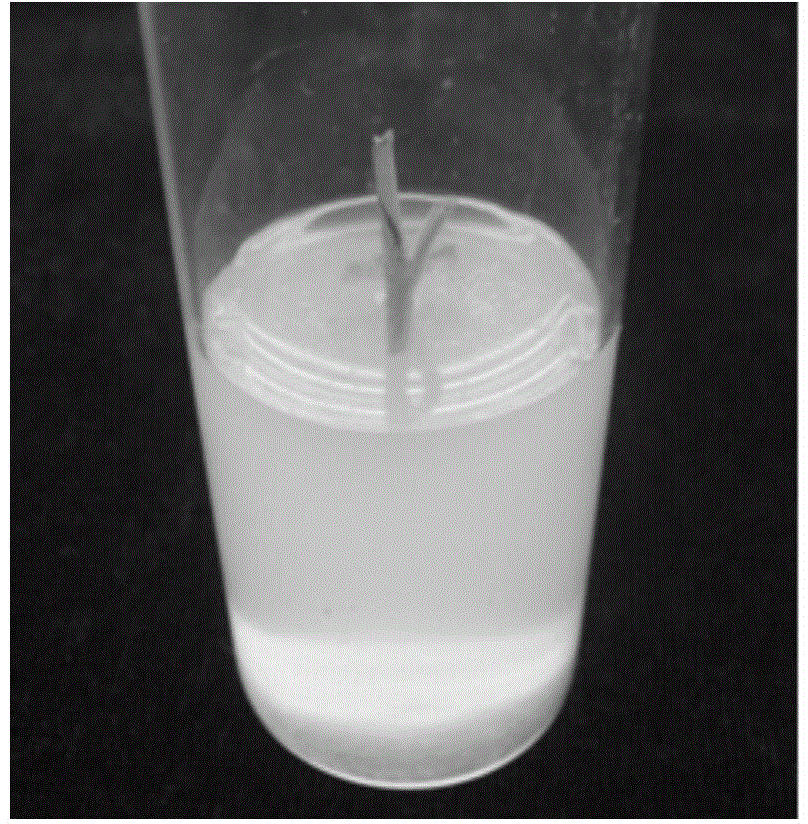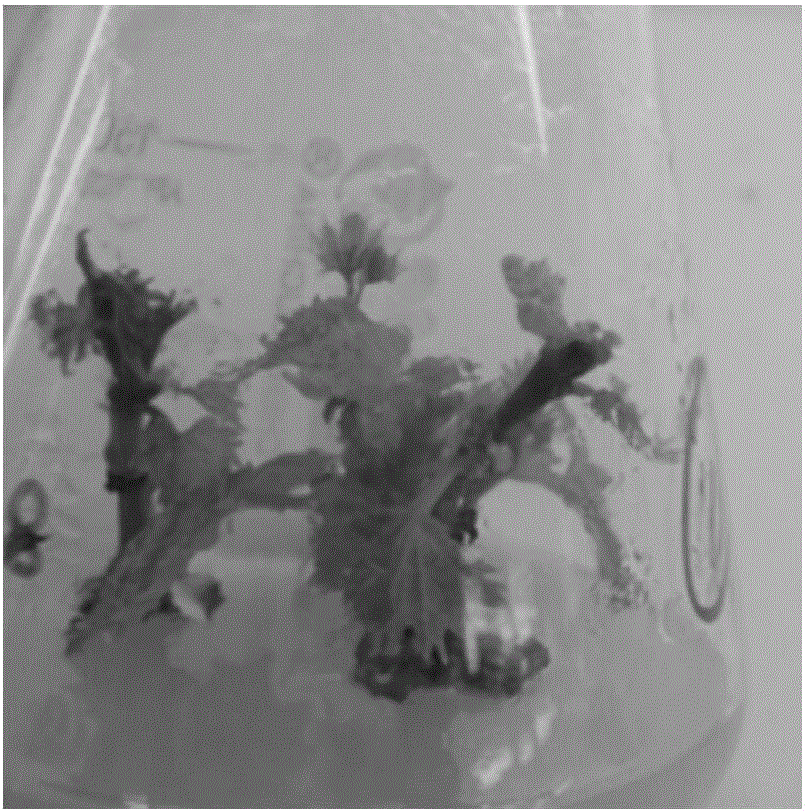Grape tissue regeneration culture method
A regeneration culture and grape technology, applied in the field of plant tissue culture, can solve the problems of high cost, long operation time, cumbersome culture technology, etc., and achieve the effect of low browning rate, high regeneration rate and broad market prospect
- Summary
- Abstract
- Description
- Claims
- Application Information
AI Technical Summary
Problems solved by technology
Method used
Image
Examples
Embodiment 1
[0027] 1) From April to May, select young shoots with axillary buds from the ground seedlings of grapes, remove the leaves, cut them to a length of about 5 cm, wash them with water for 2 hours, and use them as explants for later use;
[0028] 2) Transfer the cleaned explant material to the ultra-clean workbench, cut the axillary buds into stems about 1 cm long, soak the cut explants in 75% for 1 minute, and use 0.1 Soak and sterilize in % mercuric chloride solution for 8 minutes, rinse with sterile water 3-5 times after each immersion and disinfection, shake continuously during immersion and disinfection, drain the mercuric chloride solution and rinse with sterile water 3-5 times.
[0029] 3) After the explants are sterilized, blot the surface moisture with sterile filter paper, carefully clamp them with sterile tweezers, cut off the surfaces of the stems that are in contact with the disinfectant with sterile blades, and insert sterile adventitious bud-inducing solids. In the ...
Embodiment 2
[0034] 1) From the ground-planted seedlings of grapes between April and May, select young shoots with axillary buds that year, remove the leaves, cut them to about 5 cm long, wash them with clear water for 2 hours, and use them as explants for subsequent use;
[0035] 2) Transfer the cleaned explant material to the ultra-clean workbench, cut it into stems about 1 cm long with the axillary buds as the unit, soak the cut explants in 70% for 30 seconds, and use 0.1 Soak and sterilize in % mercuric chloride solution for 10 minutes, rinse with sterile water 3-5 times after each immersion and disinfection, shake continuously during immersion and disinfection, drain the mercuric chloride solution and rinse with sterile water 3-5 times.
[0036] 3) After the explants are sterilized, blot the surface moisture with sterile filter paper, carefully clamp them with sterile tweezers, cut off the surfaces of the stems that are in contact with the disinfectant with sterile blades, and insert s...
Embodiment 3
[0041] 1) From April to May, select young shoots with axillary buds from the ground seedlings of grapes, remove the leaves, cut them to a length of about 5 cm, wash them with water for 2 hours, and use them as explants for later use;
[0042] 2) Transfer the cleaned explant material to the ultra-clean workbench, cut into 1 cm long stem segments with axillary buds as the unit, soak the cut explants in 75% for 1 minute, and use 0.2 Soak and sterilize in % mercuric chloride solution for 8 minutes, rinse with sterile water 3-5 times after each immersion and disinfection, shake continuously during immersion and disinfection, drain the mercuric chloride solution and rinse with sterile water 3-5 times.
[0043] 3) After the explants are sterilized, blot the surface moisture with sterile filter paper, carefully clamp them with sterile tweezers, cut off the surfaces of the stems that are in contact with the disinfectant with sterile blades, and insert sterile adventitious bud-inducing s...
PUM
 Login to View More
Login to View More Abstract
Description
Claims
Application Information
 Login to View More
Login to View More - R&D
- Intellectual Property
- Life Sciences
- Materials
- Tech Scout
- Unparalleled Data Quality
- Higher Quality Content
- 60% Fewer Hallucinations
Browse by: Latest US Patents, China's latest patents, Technical Efficacy Thesaurus, Application Domain, Technology Topic, Popular Technical Reports.
© 2025 PatSnap. All rights reserved.Legal|Privacy policy|Modern Slavery Act Transparency Statement|Sitemap|About US| Contact US: help@patsnap.com



